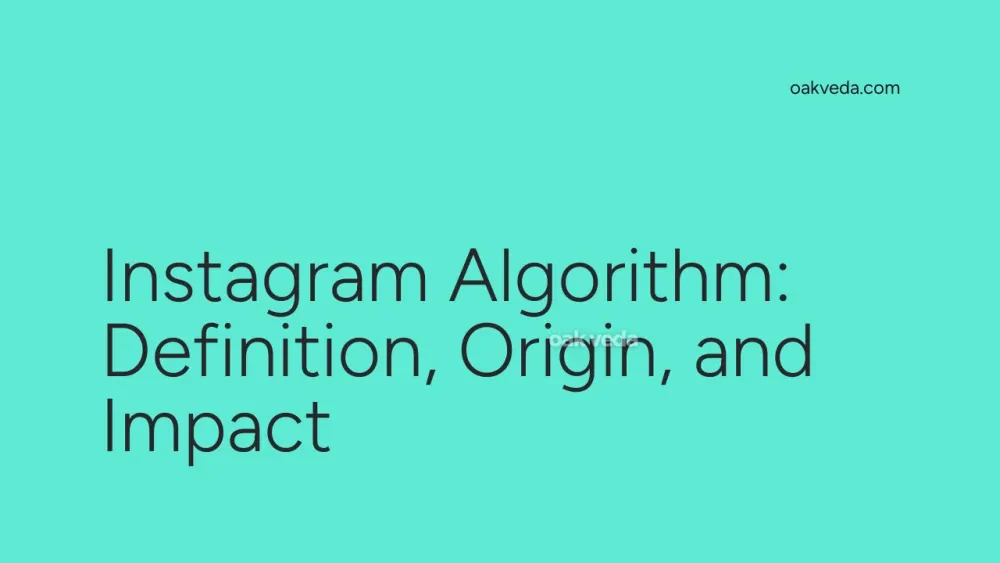
What is the Instagram Algorithm?
The Instagram algorithm is a sophisticated system that determines the order and visibility of content in users' feeds, Explore pages, and Reels. It uses machine learning and artificial intelligence to analyze user behavior, preferences, and engagement patterns to deliver personalized content experiences.
Origin and Development of the Instagram Algorithm
Instagram launched in 2010 with a chronological feed, displaying posts in reverse order of publication. However, as the platform grew, users began missing up to 70% of posts from accounts they followed. In response, Instagram introduced its first algorithm in 2016 to prioritize relevant content and improve user experience.
Since then, the algorithm has undergone several updates and refinements. Notable changes include:
- 2018: Introduction of the "You're All Caught Up" feature
- 2020: Increased focus on Reels and shopping content
- 2021: Deprioritization of reshared content and implementation of "Suggested Posts"
How the Instagram Algorithm Works
The Instagram algorithm considers various factors to determine content ranking:
- User Interest: Based on past interactions with similar content
- Relationship: Prioritizing posts from accounts users frequently engage with
- Timeliness: Favoring recent posts over older ones
- Frequency: How often a user opens the app
- Following: Content from a wider range of accounts for users who follow many profiles
- Session Time: The duration of a user's Instagram session
Key Ranking Signals
- Engagement: Likes, comments, shares, and saves
- Content Type: Photos, videos, Reels, or IGTV
- Post Information: Captions, hashtags, and location tags
- Account Activity: Posting frequency and overall account engagement
Types of Instagram Algorithms
Instagram employs different algorithms for various sections of the app:
- Feed and Stories Algorithm: Prioritizes content from friends, family, and accounts users interact with frequently
- Explore Page Algorithm: Suggests new content based on users' interests and past engagement
- Reels Algorithm: Promotes entertaining and trending short-form videos
- IGTV Algorithm: Focuses on longer-form video content from creators and brands
Popular Examples of Algorithm-Driven Content
- Trending Reels: Short, engaging videos that gain rapid popularity
- Viral Challenges: User-generated content trends that spread quickly
- Personalized Explore Pages: Tailored content discovery based on individual interests
- Suggested Posts: Recommended content from accounts users don't follow yet
Impact of the Instagram Algorithm on Social Media Culture
The Instagram algorithm has significantly influenced social media behavior and content creation:
- Content Quality: Creators focus on producing high-quality, engaging content to increase visibility
- Engagement Tactics: Users employ strategies like comment pods and engagement groups to boost post performance
- Posting Timing: Increased emphasis on optimal posting times to maximize reach
- Content Diversity: Encouragement to experiment with various content formats (e.g., Reels, IGTV) for better visibility
- Community Building: Greater importance placed on fostering genuine connections and interactions
Controversies Surrounding the Instagram Algorithm
- Shadowbanning: Concerns about reduced visibility for certain accounts or content
- Echo Chambers: Algorithm-driven content reinforcing existing beliefs and limiting exposure to diverse perspectives
- Mental Health: Potential negative impacts on user well-being due to curated, highlight-reel content
- Transparency Issues: Lack of clarity about how the algorithm makes decisions
How Brands and Influencers Use the Instagram Algorithm
Brands and influencers adapt their strategies to work with the algorithm:
- Consistent Posting: Maintaining a regular content schedule
- Engagement Encouragement: Creating content that prompts user interactions
- Cross-Promotion: Utilizing multiple content formats (e.g., Stories, Reels, IGTV)
- Authentic Relationships: Fostering genuine connections with followers
- Trend Participation: Engaging with popular challenges and hashtags
- Analytics Monitoring: Regularly analyzing post performance to refine strategies
Future Trends Related to the Instagram Algorithm
- Increased AI Integration: More sophisticated content personalization
- Video Dominance: Greater emphasis on short-form and live video content
- Enhanced Shopping Features: Improved integration of e-commerce capabilities
- Augmented Reality (AR): Expanded use of AR filters and effects in content ranking
- User Well-being Focus: Algorithm adjustments to promote positive user experiences
FAQs about the Instagram Algorithm
-
Can I beat the Instagram algorithm? While you can't "beat" the algorithm, you can optimize your content strategy to work with it by creating engaging, high-quality content and fostering genuine interactions.
-
Does posting more frequently improve my visibility? Posting consistently is important, but quality matters more than quantity. Find a balance that allows you to maintain content quality without overwhelming your audience.
-
How often does Instagram update its algorithm? Instagram continually refines its algorithm, but major updates are less frequent. The platform occasionally announces significant changes, but many adjustments happen behind the scenes.
-
Do hashtags still matter for the algorithm? Yes, hashtags remain relevant for content discovery. Use a mix of popular and niche hashtags to increase your chances of reaching interested audiences.
-
How can I tell if the algorithm is favoring my content? Monitor your post insights, including reach, engagement rates, and follower growth. Consistent improvement in these metrics suggests your content is performing well with the algorithm.
By understanding and adapting to the Instagram algorithm, users, creators, and brands can enhance their presence on the platform and create more meaningful connections with their audience.
You may be interested in:
- 1437: Definition, Origin, and Impact on Social Media
- BFR: Definition, Origin, and Impact on Social Media
- Ratio: Definition, Origin, and Impact on Social Media
- Fax No Printer: Definition, Origin, and Impact
- Repin: Definition, Origin, and Impact on Pinterest
- Ded: Definition, Origin, and Impact on Social Media

